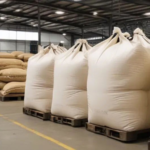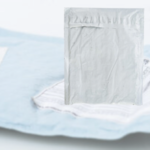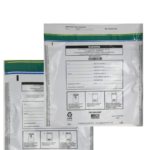
Food Industry: Ultimate Guide to Food-Grade Plastic Bags
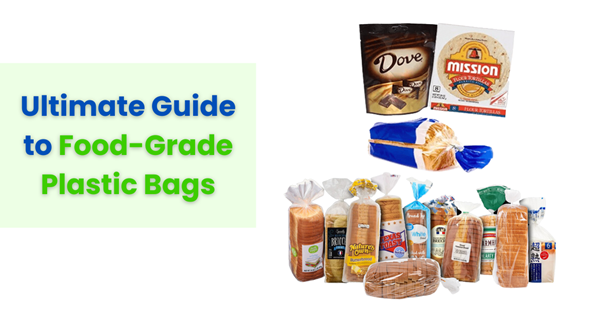
Whether you run a small food service business, catering service, or a large food manufacturing facility, ensuring the safety and quality of the products you sell or serve is of utmost importance. Not only does choosing the right packaging preserve the integrity and quality of your food products but also helps you ensure compliance with safety regulations.
That’s why using food-grade plastic is as important as the products you sell in them.
This comprehensive guide is designed to equip food businesses like yours with essential knowledge about food-grade plastic and its crucial role in maintaining the integrity of your food packaging, storage, and preparation processes.
So, let’s unlock the secrets of food grade plastic together.
What Are Food Grade Plastic Bags?
Food grade plastic bags are specifically designed for safely storing and transporting food. Unlike regular plastic bags, food grade bags are made from plastics that won’t leach chemicals into foods or beverages.
To be considered food grade, food packaging bags are to be made from materials that are FDA approved for direct food contact. The most common plastics used are polyethene (PE) and polypropylene (PP). These plastics are non-toxic, odorless, and chemically stable.
Understanding the Difference between Food Grade and Food Safe Packaging
Food grade and food safe sound similar. But they are not.
Here is an example to learn that blur difference between them:
Recall your high school geometry lessons, where we learned that while all squares are rectangles, not all rectangles are squares.
Similarly, every food-safe material can be food-grade, but not all food-grade materials are necessarily food-safe.
Food-safe materials are specifically designed to be in contact with food without causing harm, whereas food-grade materials can be deemed safe as long as they are used appropriately.
How Food Grade Plastic Bags Are Made
To ensure food grade packaging bags are safe for food storage and handling, they go through a rigorous manufacturing process.
First, the raw plastic materials, usually polyethylene (PE) pellets, are carefully selected to meet strict FDA regulations for food contact. Only plastics specifically approved for food use are allowed.
Next, the pellets are heated and extruded into a molten tube that is blown into a bubble. This bubble is then squeezed and rolled flat into plastic sheeting. During extrusion, additives like UV inhibitors and anti-static agents are often added to improve the functionality and shelf life of the bags. These additives also must be FDA-approved for food contact.
The plastic sheeting is then printed, cut, and sealed into bags of various sizes. Throughout the conversion process, the bags go through multiple quality checks to ensure there are no tears, holes, or other defects before being packaged for sale.
To maintain food safety, the entire manufacturing process is carefully controlled and monitored. Equipment and surfaces are routinely sterilized, and workers follow strict hygiene protocols. Factories that produce food grade plastic bags are also subject to frequent audits and inspections.
By following rigorous standards and practices, food grade plastic bags can be safely used to store, transport and preserve a variety of foods. When used properly and according to guidelines, they help reduce food waste and support a sustainable food supply chain.
Types of Plastic Used for Food Grade Bags
Polyethylene (PE)
Polyethylene, or PE, is the most common plastic used for food grade packaging bags. It’s a lightweight, flexible, and moisture-resistant material that’s ideal for packaging and storing food. The two types used are:
- Low-Density Polyethylene (LDPE): LDPE is a soft, pliable plastic that’s great for bags, films, and liners. It’s moisture and chemical-resistant but not heat-resistant.
- High-Density Polyethylene (HDPE): HDPE is a stiffer, more durable plastic used for jugs, bottles, and rigid containers. It has good moisture and chemical resistance and can withstand higher temperatures.
Both LDPE and HDPE are considered safe for food contact and are used to make bags for produce, meats, snacks, and more. They are odorless, colorless plastics approved by the FDA for food grade use.
Polypropylene (PP)
Polypropylene, or PP, is another plastic approved for food grade bags and packaging. It’s a rigid, heat-resistant plastic used for containers like reusable food storage boxes, microwaveable meal trays, and yogurt cups. PP bags are moisture and grease resistant, ideal for packaging snacks, granola, nuts and dried fruits. They have high clarity and gloss, allowing the contents to be clearly visible.
Nylon
Nylon is a strong, durable plastic used for mesh bags, netting, and monofilament. Nylon bags are breathable, allowing airflow to the contents. They are often used for products like onions, citrus, and root vegetables that require ventilation. Nylon is FDA approved for food contact and can withstand high temperatures during cooking or reheating.
What Makes a Plastic Bag Food Grade?
Food-Grade Plastic Must Be Chemically Inert
For a plastic bag to be considered food grade, it needs to be made from plastics that won’t leach chemicals into food. The most common plastics used are polyethylene (PE) and polypropylene (PP). These plastics are chemically inert, meaning they don’t react with or dissolve into the foods they come into contact with. Other plastics like PVC often contain plasticizers and stabilizers that can migrate into food, so they are not food safe.
It Must Be Specifically Designed and Tested for Food Contact
Food grade plastic bags are made from plastics and additives that are approved for direct food contact. The manufacturers rigorously test the bags to ensure there is no chemical migration according to strict food safety standards. The bags may also undergo additional testing to certify they meet requirements for specific foods like high-fat, high-moisture, or acidic foods. If a bag is not clearly marked as “food grade” or “food safe,” it has not gone through this testing and should not be used for food.
Proper Thickness Prevents Leaks and Spills
Food grade plastic bags need to be thick enough to safely contain foods without the risk of punctures, tears or leaks. The thickness, measured in mils, depends on the intended use and food type. For example, bags for produce and meats are typically thicker than bags for dried goods. The bag material and seams must be durable enough to withstand the weight and moisture of the food.
It Must Be Clearly Labeled for Food Use
Food grade plastic bags will always be clearly marked as “food grade,” “food safe,” or for a specific food type like “produce bags” or “freezer bags.” This labeling, along with the plastic type, like HDPE or LDPE, tells you the bags have been properly manufactured, tested, and approved for direct food contact. If there is no food-related labeling, it’s best to avoid using the bags for food storage.
Uses of Food Grade Plastic Bags
Food grade plastic bags have many important uses, especially in the food industry. Let’s explore some of the main ways these bags are utilized.
Storing and Transporting Food
The most obvious use of food grade plastic bags is safely storing and transporting food. Restaurants, grocery stores, and food manufacturers rely on these bags to keep ingredients and products fresh during shipping and storage. Plastic bags create an airtight seal that locks in freshness and prevents contamination.
Freezing Food
Food grade plastic bags are ideal for freezing food. They are durable enough to withstand extremely cold temperatures without becoming brittle. The airtight seal also prevents freezer burn by blocking exposure to oxygen. Many brands of resealable frozen food bags are BPA-free and FDA-approved for direct food contact.
Cooking and Reheating
Some high-quality food grade plastic bags are microwave and dishwasher-safe, allowing you to cook and reheat food directly in the bag. This is very convenient but be sure to double-check the specifications of your bags to ensure they can withstand high heat before using them in this way.
Portion Control
Pre-made plastic bags in various sizes are useful for controlling portion sizes. You can separate bulk ingredients or leftovers into individual servings before storing or freezing. This makes it easy to grab just what you need and avoids waste.
Organization
Finally, food grade plastic bags help keep your kitchen, pantry, and refrigerator organized. Use them to group similar items or to keep strong-smelling foods separated. Label each bag to make things easy to spot at a glance. An organized kitchen is an efficient kitchen!
With many benefits and a variety of applications, it’s no wonder food grade plastic bags have become such an integral part of food storage and preparation. Keep a supply on hand and discover how useful they can be.
The Bottom Line:
Whether you need bags for produce, meat, baked goods, or liners, you’ve got the knowledge to pick ones that will keep your food fresh and safe. You understand the different types of plastics, which ones are food grade, and the pros and cons of each.
You’re also aware of some of the environmental impacts and can make sustainable choices. Food grade plastic bags may not seem like the most exciting topic, but knowing how to properly handle food is so important.
At Connover Packaging, we offer high quality food grade packaging bags for all types and sizes of food industries.
Share:
Get A Quick Quote
Social Media
Most Popular
Categories
Tags
Related Posts

The Ultimate Guide to Organizing and Storing Soil Bags
If you’re a gardening enthusiast, you know how important it is to have good-quality soil for your plants to thrive. Soil bags, whether they be
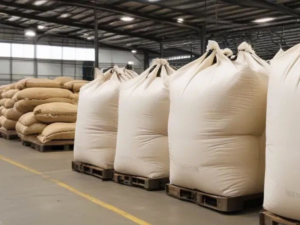
A Guide to Utilizing Bulk Bags in Agriculture: Making Farming Effortless
Bulk bags or flexible intermediate bulk containers (FIBCs) are one of the important tools used in farming practices. These large, sturdy bags offer a range

Clear Poly Mailer Bags: The Ultimate Shipping Upgrade
Shipping is a challenging aspect in the world of e-commerce. Some products like glass items, electronics, and artwork are more fragile than others. As a

